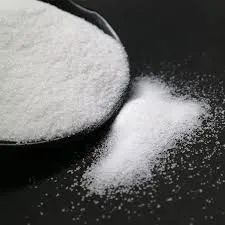The Rise of Anti-Fog Plastics Innovations and Applications
In today's world, where transparency and visibility are critical across various industries, anti-fog plastics have emerged as a significant innovation. These specialized materials are designed to reduce or eliminate fogging on surfaces, enhancing safety and functionality in diverse applications. This article delves into the technology, benefits, and potential uses of anti-fog plastics, highlighting their importance in our daily lives.
Understanding Anti-Fog Technology
Fogging occurs when moisture condenses on a surface, creating a layer of water droplets that obscures vision. This phenomenon is particularly problematic in environments with significant temperature variations, such as in vehicles or during outdoor activities. To combat fogging, manufacturers have developed anti-fog plastics, which are treated with coatings or embedded with hydrophilic materials. These treatments alter the surface tension of the plastic, allowing water to spread out in a thin, unobtrusive layer rather than forming droplets.
The most common types of anti-fogging treatments include hydrophilic coatings, which attract water molecules and promote a uniform film, and permanently anti-fogging plastics, which integrate the anti-fog properties into the material itself. These innovations have revolutionized the way we approach fog-prone scenarios across various sectors.
Benefits of Anti-Fog Plastics
The advantages of anti-fog plastics are numerous. First and foremost, they significantly improve visibility, which is crucial in safety-critical applications such as eyewear, vehicle windshields, and protective face shields. For example, healthcare professionals rely on anti-fog face shields during surgeries or patient interactions to maintain clarity and avoid potential hazards.
In addition to enhancing visibility, anti-fog plastics also contribute to user comfort. For instance, athletes often wear anti-fog goggles to ensure optimal performance in humid or varied temperature conditions. This level of comfort can lead to improved concentration and effectiveness, whether in sports, work environments, or casual settings.
anti fog plastics

Moreover, the durability of these materials has been a focus of research and development. Many anti-fog plastics are designed to withstand harsh conditions, ensuring that their efficacy is maintained over time and with regular use. This longevity reduces the need for frequent replacements, making anti-fog plastics a cost-effective solution in the long run.
Applications Across Industries
The applications of anti-fog plastics are vast and varied. In the healthcare industry, anti-fog safeguards are vital for maintaining clear visibility in surgical settings, helping medical professionals perform their duties with precision. Similarly, in the automotive sector, anti-fog treatments are applied to windshields and mirrors, ensuring safe driving in foggy or humid weather conditions.
The sports and outdoor gear market has also embraced anti-fog technology. From goggles used in swimming and skiing to visors on helmets, athletes benefit from enhanced visibility, allowing them to focus on their performance without distraction. Additionally, the food packaging industry has started to utilize anti-fog plastics to maintain product visibility while preventing moisture accumulation, which can affect product quality.
Future Innovations
As technology progresses, the development of anti-fog plastics continues to evolve. Researchers are exploring new materials and methods to enhance the effectiveness and sustainability of these products. Incorporating eco-friendly materials and biodegradable options could address growing environmental concerns, making anti-fogging technologies more sustainable for the future.
In conclusion, anti-fog plastics have become essential materials in various industries, improving safety and comfort while enhancing visibility. As innovators continue to refine these technologies, we can expect even broader applications and advancements that will further integrate anti-fog solutions into our everyday lives. With ongoing research and development, the future of anti-fog plastics looks promising, transforming how we interact with our environments and ensuring clarity and safety in every scenario.

